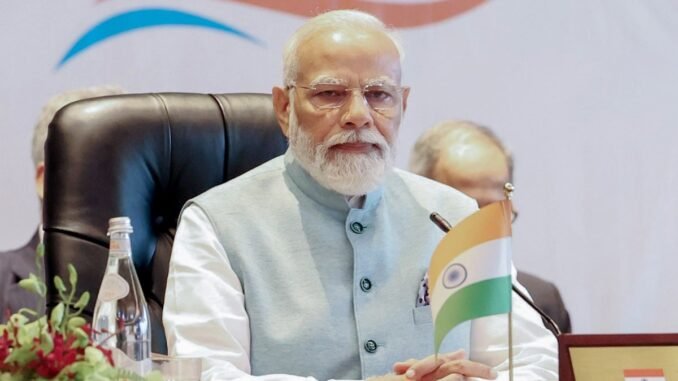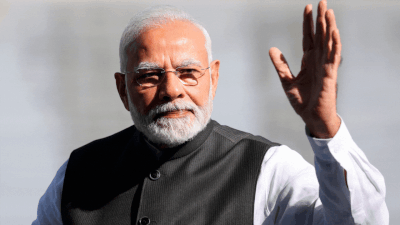
On July 2, 2025, Prime Minister Narendra Modi embarked on an ambitious eight-day diplomatic tour, visiting five nations—Ghana, Trinidad and Tobago, Argentina, Brazil, and Namibia. This trip, the longest foreign tour in his decade-long tenure, underscores India’s commitment to deepening ties with the Global South and advancing its strategic interests on the global stage. Here’s a detailed look at the tour, its objectives, and why it matters to India.
The Itinerary: A Packed Schedule Across Two Continents
The tour, spanning July 2 to July 9, covers Africa, Latin America, and the Caribbean, with a mix of bilateral engagements, parliamentary addresses, and participation in the 17th BRICS Summit in Brazil. Here’s a breakdown of the schedule:
- Ghana (July 2–3): PM Modi’s first stop is Accra, marking the first visit by an Indian Prime Minister to Ghana in 30 years. He will hold talks with President John Dramani Mahama and address the Ghanaian Parliament, focusing on strengthening India-Africa relations.
- Trinidad and Tobago (July 3–4): In Port of Spain, Modi will meet President Christine Carla Kangaloo and Prime Minister Kamla Persad-Bissessar, both of Indian origin, to reinforce cultural and historical ties with the Indian diaspora.
- Argentina (July 4–5): In Buenos Aires, Modi will engage with President Javier Milei to boost cooperation in agriculture, critical minerals, and trade, marking the first bilateral visit by an Indian PM to Argentina in 57 years.
- Brazil (July 5–8): The highlight of the tour is the BRICS Summit in Rio de Janeiro (July 6–7), followed by a state visit to Brasilia to meet President Luiz Inácio Lula da Silva. Modi will push for global governance reforms and climate finance.
- Namibia (July 8–9): The tour concludes in Windhoek, where Modi will meet President Netumbo Nandi-Ndaitwah and address the Namibian Parliament, focusing on shared anti-colonial history and new cooperation avenues.

Why This Tour Matters
This diplomatic marathon is not just about high-profile meetings; it’s a strategic move to elevate India’s global influence. Here’s why each stop is significant:
Ghana: Deepening India-Africa Ties
Ghana, a key player in the African Union and ECOWAS, is a gateway to West Africa. Modi’s visit aims to strengthen ties in health, education, and technology, with potential agreements to boost India’s soft power. The address to Ghana’s Parliament and a visit to the Kwame Nkrumah Memorial Park highlight the shared history of anti-colonial struggles. For Indians, this means stronger partnerships in a region rich in resources and growing markets.
Trinidad and Tobago: Celebrating Diaspora Connections
With nearly 40% of its population of Indian descent, Trinidad and Tobago holds deep cultural ties with India. Modi’s address to a special parliamentary session will resonate with the diaspora, reinforcing India’s global cultural influence. Cooperation in trade and energy will also be on the agenda, offering Indian businesses new opportunities in the Caribbean.
Argentina: Tapping Latin American Potential
Argentina, a G20 member, is a vital partner for India in Latin America. Discussions with President Milei will focus on agriculture, critical minerals, and renewable energy. For India, securing access to Argentina’s vast mineral resources could reduce dependence on China, a key strategic goal.

Brazil: Leading the Global South at BRICS
The BRICS Summit in Rio is a platform for India to advocate for a multipolar world order. With Brazil chairing the summit under the motto “Strengthening Global South Cooperation,” Modi will push for reforms in global governance, responsible AI use, and climate finance. The bilateral visit to Brasilia, the first by an Indian PM in nearly six decades, will further cement India-Brazil ties, benefiting Indian industries in defence and energy.
Namibia: A Trusted Partner in Africa
Namibia, with its shared history of resisting colonialism, is a strategic partner for India in Southern Africa. Modi’s visit, the first in 27 years, will focus on defence, trade, and critical minerals, vital for India’s tech and energy sectors. His address to the Namibian Parliament will signal India’s commitment to African partnerships.
Key Objectives: What India Stands to Gain
- Securing Critical Minerals: With China’s restrictions on rare earth exports, India is eyeing Ghana, Namibia, and Argentina for minerals like lithium and cobalt, crucial for batteries and tech industries.
- Strengthening Global South Leadership: The tour reinforces India’s role as a voice for developing nations, especially at the BRICS Summit, where Modi will address global issues like climate change and terrorism.
- Boosting Trade and Investment: From healthcare in Ghana to energy in Argentina, the tour aims to open new markets for Indian businesses.
- Countering Geopolitical Challenges: By engaging with BRICS and African nations, India aims to counterbalance China’s influence and strengthen ties with the West.
- Diaspora Engagement: Modi’s interactions with the Indian diaspora in Trinidad and Tobago and Ghana will bolster cultural ties and encourage investment in India.
Challenges and Criticisms
The Congress party has criticized the tour, alleging Modi is avoiding domestic issues like unrest in Manipur and setbacks in Operation Sindoor. However, the government counters that this tour is a strategic necessity to secure India’s economic and geopolitical interests in a volatile world.
Looking Ahead
For the average Indian, this tour could translate into new job opportunities, access to critical resources, and a stronger global image for India. As Modi navigates bilateral talks, parliamentary addresses, and the BRICS Summit, his packed itinerary reflects India’s ambition to be a global leader. By July 9, when he returns from Namibia, the outcomes of this tour could shape India’s economic and diplomatic trajectory for years to come.
Last Updated on: Wednesday, July 2, 2025 9:09 pm by Sri Hari Priya Rayaprolu | Published by: Sri Hari Priya Rayaprolu on Wednesday, July 2, 2025 9:09 pm | News Categories: News, India, Latest

Leave a Reply